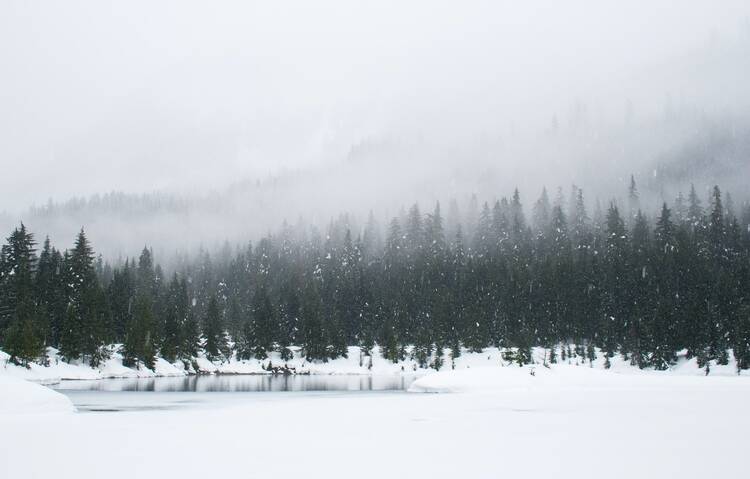You know what’s crazy about Christmastime? For as much as we imagine it as a happy time, a season of presents and pretty lights and family, a lot of the carols we sing are actually kind of sad—even ones that don’t seem like they should be. Consider “Christmas Time Is Here” from “A Charlie Brown Christmas.” Here are the opening lyrics: “Christmas time is here/ Happiness and cheer/ Fun for all that children call/ Their favorite time of year.” Happiness, cheer, children’s fun! What could be better?
Now take a listen, and what do you find? It is the definition of wistful.
“I’ll be Home for Christmas” has a hopeful title, and the singer promises it’s definitely going to happen. “You can count on me,” they say. “Christmas Eve will find me/ Where the love light dreams.” Then we get the twist: “I’ll be home for Christmas/ If only in my dreams.” Wait, what? So you’re not coming, then? Didn’t you just say you were?
“White Christmas” doesn’t even bother hiding its melancholy. Right from the top it is a song about remembering things that used to be, white Christmases “like the ones I used to know.”
Catholic Christmas carols tend to be more upbeat and hopeful. “Joy to the World,” “O Come All Ye Faithful,” “Hark the Herald Angels Sing,” “Angels We Have Heard on High,” “Rudolph the Red-Nosed Reindeer” (you realize Rudolph is a Christ-figure, right?)—they are all songs with a lot of positive feeling in them. Even some of the slower ones like “Silent Night” or “O Holy Night” are profoundly moving.
But “In the Bleak Midwinter,” which is the subject of this week’s episode of Hark!, America Media’s podcast about the origins and meaning of popular Christmas carols, definitely has a certain melancholy to it. You can see it right away in the lyrics of that opening verse, which describes what it’s like in the middle of the winter: “Earth stood hard as iron”; “water like a stone”; “Snow on snow on snow.” As a Chicago native, I have a very clear sense of what snow on snow on snow looks like, and it definitely is not what you’d call joyful.
“In the Bleak Midwinter” points us to the ordinary: a cold day, a straw bed, a mother’s kiss. It reminds us that Jesus’ story is first and foremost a human story, just like ours.
Even as the song moves into describing Jesus’ decision to come to Earth, the way it depicts his action is unusual—“Our God, Heaven cannot hold him,” it begins, as though Heaven is some kind of prison. A few lines later we hear “Heaven and earth shall flee away,” as though Jesus is some kind of threat.
Meanwhile, to say the pace and tone of the song is sober is an understatement. I’ve heard funeral hymns that had more sparkle and swing—a lot more.
Over the years there have been variations on the original arrangement by Gustav Holst, of course, like Harold Darke’s choral arrangement, which they talk about on the podcast. There have been some modern versions, too, that try to do more with the song’s natural austerity. Jamie Cullum, for instance,has a wonderful take, which slowly introduces some instruments and vocal harmonies to create a sense of quietly building life as Jesus is born. Halfway through her version of the song, Annie Lennox brings in a drum and some unexpected harmonies that gives the moment tremendous pride. But in most versions, solemnity reigns.
As strange as that may seem for a song about the birth of Jesus, it does refocus our attention. Where a lot of Catholic Christmas hymns lean into the more fantastical elements—angels, stars, kings—“In the Bleak Midwinter” points us instead to the ordinary: a cold day, a straw bed, a mother’s kiss. It reminds us that Jesus’ story is first and foremost a human story, just like ours. And it reassures us that all we need to offer him is our open, human hearts.
For much, much more about the origins and composition of “In the Bleak Midwinter,” check out this week’s episode of Hark!, the America Media podcast about Christmas carols.








